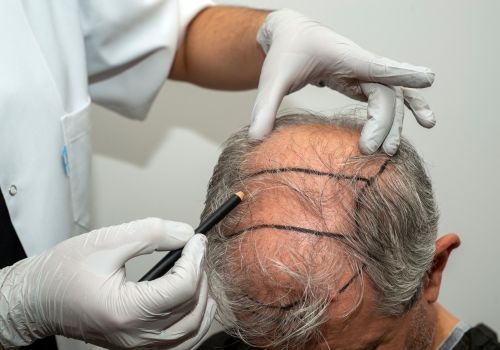Understanding Hair Loss in the Crown Area
Hair thinning and loss in the crown region is a common concern for many individuals. The crown, located at the back and top of the scalp, often shows early signs of balding or thinning due to genetic factors, aging, or other influences. Crown Hair Transplant in Abu Dhabi provides an effective solution to restore hair density and improve appearance, helping individuals regain confidence.Addressing crown hair loss effectively requires specialized techniques tailored to the unique characteristics of this area. Advanced hair transplant methods are designed to provide natural, lasting results that restore density and coverage where it’s needed most.
The Challenges of Crown Hair Transplantation
Transplanting hair in the crown region presents specific challenges. The circular pattern of hair growth, the varying angles and directions, and the naturally thinner hair in this area require meticulous planning and execution.
Additionally, achieving density while maintaining a natural look can be difficult because the crown often experiences diffuse thinning. To overcome these challenges, advanced hair transplant techniques focus on precision, optimal graft placement, and individualized treatment plans.
Follicular Unit Extraction (FUE) for the Crown
One of the most widely used advanced techniques for crown hair transplantation is Follicular Unit Extraction (FUE). This minimally invasive method involves extracting individual hair follicles from a donor area—usually the back or sides of the scalp—and transplanting them into the thinning crown.
FUE allows for precise placement of each follicle, following the natural hair growth pattern of the crown. This technique minimizes scarring and provides a quicker recovery compared to traditional strip methods.
Follicular Unit Transplantation (FUT) and Its Role
While FUE is popular, Follicular Unit Transplantation (FUT) remains an effective method, especially when a larger number of grafts are required. FUT involves removing a strip of scalp from the donor area, dissecting it into individual follicular units, and implanting them into the crown.
FUT can be advantageous for achieving greater density in the crown with fewer sessions. However, it requires careful consideration of scarring and healing.
Advanced Graft Placement Techniques
Achieving natural crown hair restoration depends heavily on the strategic placement of grafts. Advanced techniques utilize high magnification and detailed mapping to mimic the natural whorl and swirl pattern of hair growth in the crown.
This ensures that transplanted hair blends seamlessly with existing hair, preserving the natural flow and direction. Proper angling and spacing also prevent an overly dense or unnatural look.
Use of Robotic and Digital Assistance
Cutting-edge hair transplant centers often incorporate robotic assistance and digital imaging to enhance precision. Robotic systems can aid in extracting follicles with minimal trauma, increasing graft survival rates.
Digital planning tools help surgeons visualize the crown area, plan graft placement, and simulate post-transplant outcomes. These technologies contribute to improved accuracy and patient satisfaction.
Post-Transplant Care for Lasting Results
Following the transplant procedure, proper care is essential to ensure graft survival and promote healthy hair growth. Patients are typically advised on scalp hygiene, avoiding strenuous activities, and protecting the transplanted area from sun exposure.
Regular follow-up visits allow practitioners to monitor progress and address any concerns, helping secure lasting and natural-looking results.
Why Choose Advanced Techniques for Crown Hair Transplant?
Advanced hair transplant methods provide several benefits for crown restoration:
- Natural Appearance: Careful graft placement replicates the crown’s natural hair patterns.
- Minimal Scarring: Techniques like FUE reduce visible scarring.
- Long-Lasting Results: Transplanted hair is permanent, growing naturally over time.
- Personalized Treatment: Procedures are tailored to individual hair characteristics and goals.
These factors combine to deliver effective solutions for those seeking to restore hair in the crown area confidently.
FAQs About Crown Hair Transplant Techniques
What makes crown hair transplant different from other scalp areas?
The crown has a unique hair growth pattern and often experiences diffuse thinning, requiring specialized graft placement and planning.
Is FUE better than FUT for the crown?
Both techniques have advantages; FUE is less invasive with minimal scarring, while FUT can provide more grafts in a single session.
How soon will transplanted hair grow?
Hair growth typically begins around three to four months post-procedure, with significant results visible within 8 to 12 months.
Are the results permanent?
Yes, transplanted hair follicles are resistant to hair loss and provide lasting coverage.
Can advanced technology improve transplant outcomes?
Yes, robotic and digital tools increase precision, graft survival, and overall success rates.
Is the procedure painful?
Local anesthesia is used during the procedure, and discomfort is usually minimal.
Achieve Confidence with Advanced Crown Hair Transplant Techniques
For individuals experiencing hair loss in the crown area, advanced hair transplant techniques offer a reliable and natural solution. By combining expert surgical skill with the latest technology, these methods restore hair density, improve scalp aesthetics, and enhance confidence.Effective Solutions for Crown Hair Loss with Expert Transplants





Comments